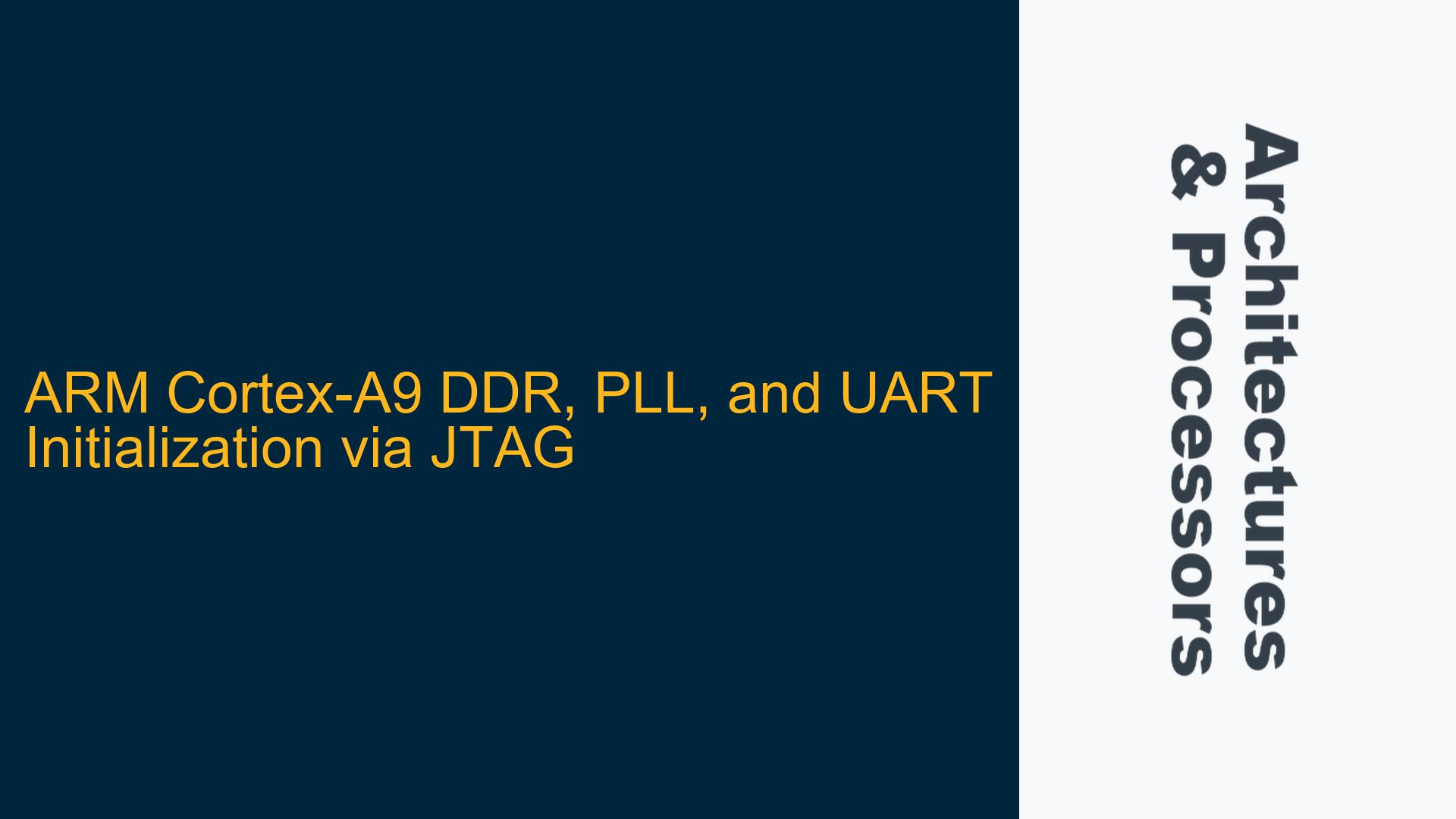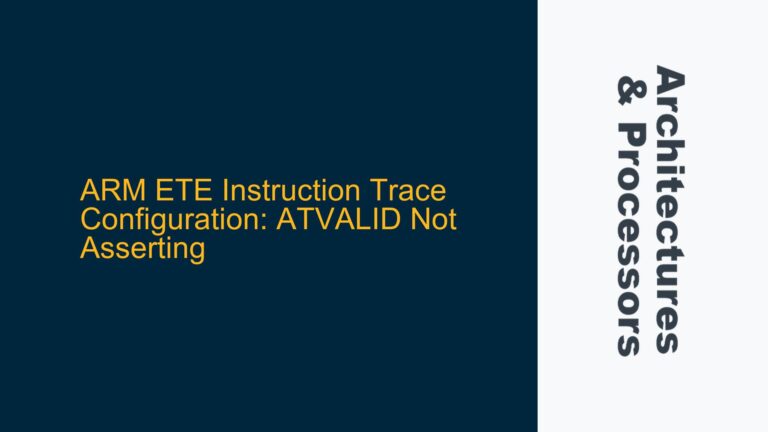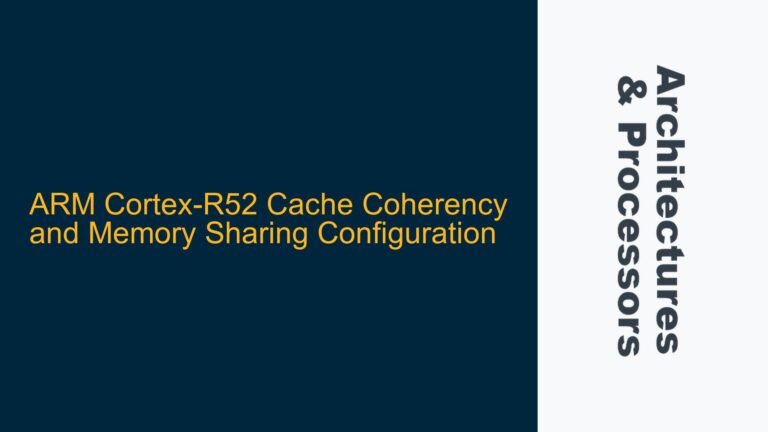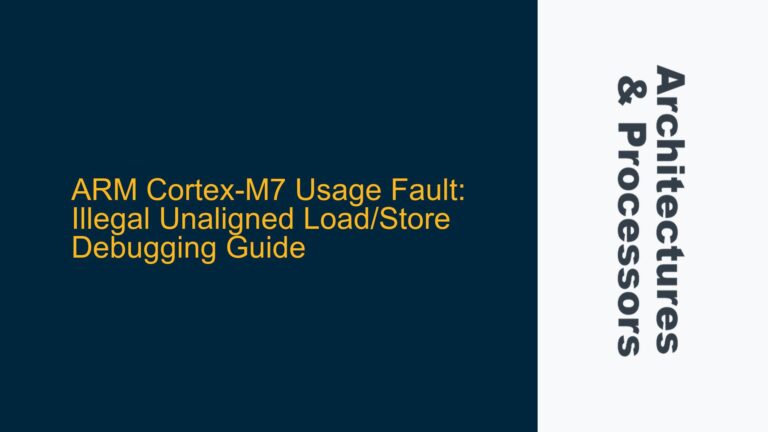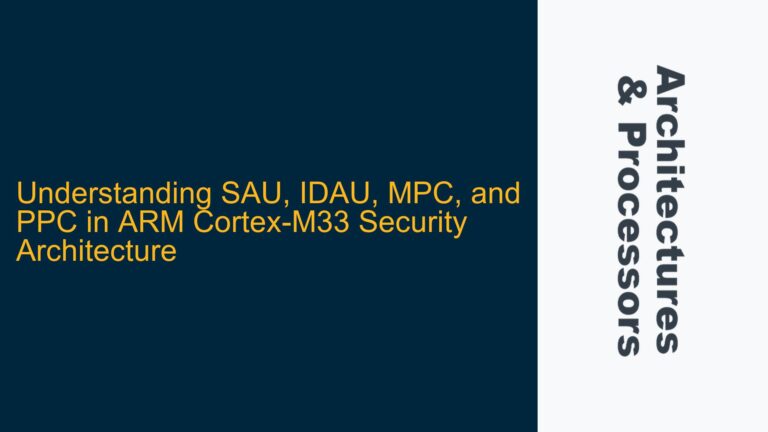ARM Cortex-A9 DDR, PLL, and UART Initialization Sequence
The initialization of DDR (Double Data Rate) memory, PLL (Phase-Locked Loop), and UART (Universal Asynchronous Receiver-Transmitter) on an ARM Cortex-A9 processor is a critical step in bringing up a system, especially when loading a primary bootloader via JTAG. The Cortex-A9, being a high-performance processor, relies on precise configuration of its peripherals and memory interfaces to ensure stable operation. The DDR memory controller must be configured to match the specific timing parameters of the installed DDR memory chips. The PLLs must be set up to provide the correct clock frequencies for the processor core, memory, and peripherals. The UART, often used for debugging and communication, must be initialized to the desired baud rate and configuration.
The process involves writing specific values to a series of registers in the correct sequence. These registers are part of the memory controller, clock controller, and UART peripheral blocks. The sequence is crucial because certain configurations depend on others being set first. For example, the DDR controller cannot be initialized until the PLLs are configured to provide the correct clock frequencies. Similarly, the UART cannot function without a stable clock source.
The complexity of this process is compounded by the fact that the exact register addresses and values depend on the specific implementation of the Cortex-A9 system. Different System-on-Chip (SoC) vendors may have different memory maps and register definitions. Therefore, the initialization sequence must be tailored to the specific hardware being used.
Memory Controller Configuration and Clock Source Dependency
One of the primary challenges in initializing the Cortex-A9 is ensuring that the memory controller is properly configured before any attempt is made to access DDR memory. The memory controller is responsible for managing the interface between the processor and the DDR memory. It must be configured with the correct timing parameters, which are specific to the DDR memory chips used in the system. These parameters include CAS latency, RAS to CAS delay, row precharge time, and many others. Incorrect configuration of these parameters can lead to memory access errors, data corruption, or complete system failure.
The memory controller configuration is closely tied to the clock source configuration. The DDR memory interface operates at a high frequency, and this frequency is derived from the PLLs. The PLLs must be configured to provide the correct clock frequencies for the DDR memory controller. This involves setting the PLL multipliers and dividers to achieve the desired frequency. The PLL configuration must be done before the memory controller is initialized, as the memory controller relies on a stable clock signal to function correctly.
In addition to the PLL configuration, the clock distribution network must also be set up. This involves configuring clock gates and multiplexers to ensure that the correct clock signals are routed to the memory controller and other peripherals. The clock distribution network is often controlled by a separate set of registers, and these must be configured in the correct sequence to avoid glitches or unstable clock signals.
The UART initialization is somewhat simpler but still requires careful configuration. The UART peripheral must be configured with the correct baud rate, data format, and interrupt settings. The baud rate is derived from the UART clock source, which is typically one of the PLL outputs. Therefore, the PLLs must be configured before the UART can be initialized. The UART configuration also involves setting up the transmit and receive buffers, enabling the UART, and configuring any necessary interrupts.
Step-by-Step Register Configuration and Validation
The first step in the initialization process is to configure the PLLs. This involves writing to the PLL control registers to set the desired multipliers and dividers. The exact register addresses and values depend on the specific SoC being used, but the general process involves setting the PLL to bypass mode, configuring the multipliers and dividers, and then switching the PLL to normal mode. The PLL output must be stable before proceeding to the next step.
Once the PLLs are configured, the next step is to set up the clock distribution network. This involves writing to the clock control registers to configure the clock gates and multiplexers. The goal is to ensure that the correct clock signals are routed to the memory controller and other peripherals. This step may also involve configuring the clock dividers to achieve the desired clock frequencies for each peripheral.
With the clock sources configured, the next step is to initialize the memory controller. This involves writing to the memory controller registers to set the timing parameters for the DDR memory. The exact parameters depend on the specific DDR memory chips used in the system, and these parameters are typically provided in the memory datasheet. The memory controller configuration also involves setting up the memory map, which defines the address ranges for different memory regions.
After the memory controller is initialized, the next step is to configure the UART. This involves writing to the UART control registers to set the baud rate, data format, and interrupt settings. The baud rate is typically derived from the UART clock source, which is one of the PLL outputs. The UART configuration also involves setting up the transmit and receive buffers and enabling the UART.
The final step in the initialization process is to validate the configuration. This involves reading back the register values to ensure that they have been set correctly. It may also involve running a memory test to verify that the DDR memory is functioning correctly. The UART can be tested by sending and receiving data to ensure that it is configured correctly.
In summary, the initialization of DDR, PLL, and UART on an ARM Cortex-A9 processor involves a series of carefully sequenced register writes. The process begins with the configuration of the PLLs, followed by the clock distribution network, memory controller, and UART. Each step depends on the previous one, and the exact register addresses and values depend on the specific SoC being used. The process requires a deep understanding of the hardware and careful attention to detail to ensure that the system is brought up correctly.
Detailed Register Configuration Tables
To provide a more concrete example, the following tables outline the typical register configurations for initializing the PLL, memory controller, and UART on a generic ARM Cortex-A9 system. Note that the exact register addresses and values will vary depending on the specific SoC being used.
PLL Configuration
| Register Name | Address Offset | Value | Description |
|---|---|---|---|
| PLL_CTRL | 0x1000 | 0x00000001 | Enable PLL bypass mode |
| PLL_MULT | 0x1004 | 0x0000000A | Set PLL multiplier to 10 |
| PLL_DIV | 0x1008 | 0x00000002 | Set PLL divider to 2 |
| PLL_CTRL | 0x1000 | 0x00000002 | Switch PLL to normal mode |
Clock Distribution Configuration
| Register Name | Address Offset | Value | Description |
|---|---|---|---|
| CLK_GATE_UART | 0x2000 | 0x00000001 | Enable clock gate for UART |
| CLK_MUX_MEM | 0x2004 | 0x00000001 | Select PLL output as clock source for memory controller |
| CLK_DIV_MEM | 0x2008 | 0x00000002 | Set memory controller clock divider to 2 |
Memory Controller Configuration
| Register Name | Address Offset | Value | Description |
|---|---|---|---|
| MEM_TIMING1 | 0x3000 | 0x12345678 | Set CAS latency, RAS to CAS delay, and other timing parameters |
| MEM_TIMING2 | 0x3004 | 0x87654321 | Set row precharge time and other timing parameters |
| MEM_MAP | 0x3008 | 0x00000001 | Enable memory map for DDR region |
UART Configuration
| Register Name | Address Offset | Value | Description |
|---|---|---|---|
| UART_BAUD | 0x4000 | 0x0000001A | Set baud rate to 115200 |
| UART_CTRL | 0x4004 | 0x00000003 | Enable transmit and receive |
| UART_INT_EN | 0x4008 | 0x00000001 | Enable UART interrupts |
These tables provide a high-level overview of the register configurations required for initializing the PLL, clock distribution network, memory controller, and UART on an ARM Cortex-A9 system. The exact values and addresses will vary depending on the specific hardware being used, but the general process remains the same.
Conclusion
Initializing DDR, PLL, and UART on an ARM Cortex-A9 processor is a complex but essential task when bringing up a new system. The process involves a series of carefully sequenced register writes, each of which depends on the previous one. The exact register addresses and values depend on the specific SoC being used, but the general process involves configuring the PLLs, setting up the clock distribution network, initializing the memory controller, and configuring the UART. Each step requires a deep understanding of the hardware and careful attention to detail to ensure that the system is brought up correctly. By following the steps outlined in this guide, you can successfully initialize your ARM Cortex-A9 system and load the primary bootloader via JTAG.
